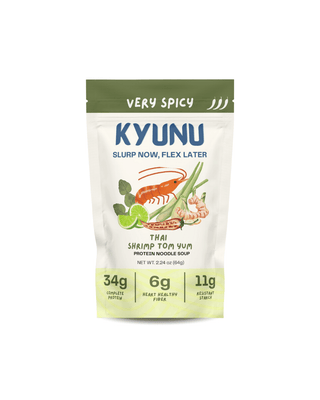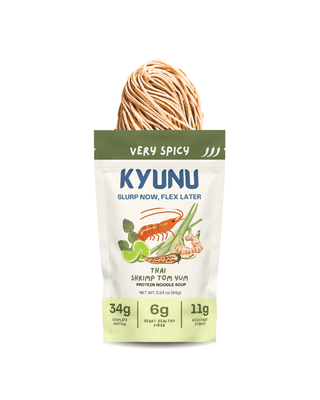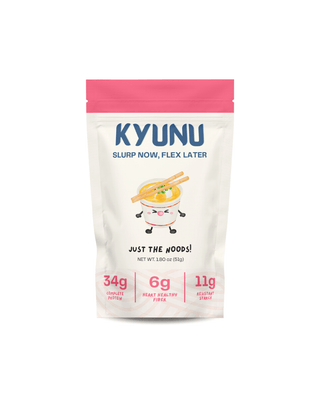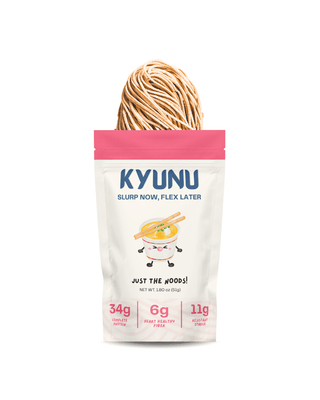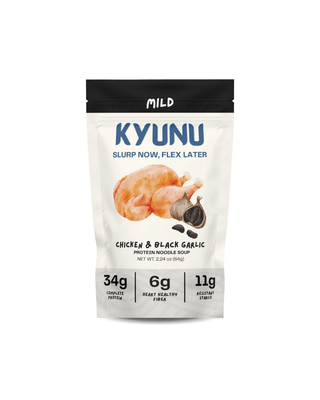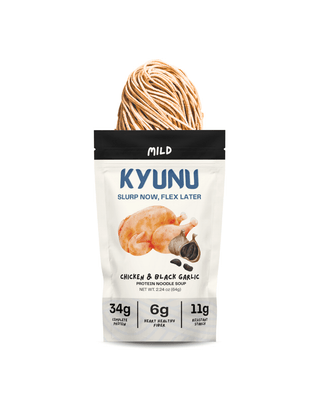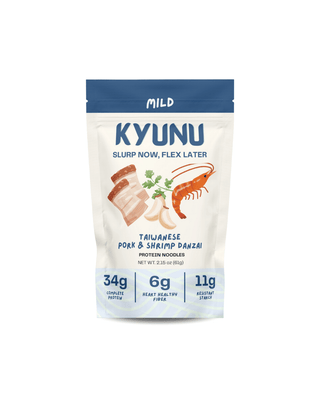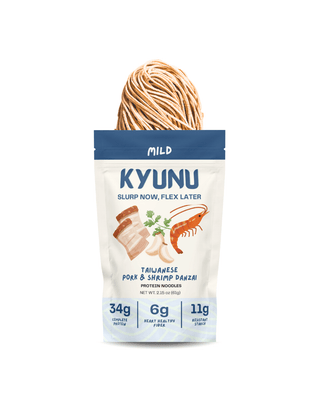When most people think about managing cholesterol, they think less meat. That can be part of an effective strategy because it eliminates saturated fats from your diet. But what most people don't realize is that managing blood sugar levels is another behavior that can significantly impact your cholesterol levels, heart health, and risk of developing diabetes (1). Read on to learn more the relationship between blood sugar and these health outcomes to be more informed about other changes you can make to your overall diet.
The Intricate Connection: Blood Sugar and Cholesterol
The Sugary Beverage Pitfall
One of the primary culprits behind blood sugar spikes is the consumption of sugary beverages like soda and fruit juices. Numerous studies have established a direct link between consuming these sugar-laden drinks and an increased risk of low HDL and high triglyceride levels, setting the stage for potential heart health issues (3).The Asian Diet Pitfall
The Asian Diet—often rich in white rice, rice noodles, and wheat noodles alongside pork and tasty sauces—is the ultimate cholesterol bomb because there are hidden sugars in nearly everything.
Rice and traditional wheat noodles are simple carbohydrates that are easily digested and converted into glucose. In the sauces, salty flavors are usually balanced by a bit of sugar. Pork based sauces especially are often made slightly sweet to complement the pork flavor. Have you heard of red braised pork? The red color comes from caramelizing sugar in fat and then stir frying the pork in the sugar and fat. These types of meals can contribute to a strong insulin spike that you may not be aware of.
Based on a study published by MDPI (4):
- Adults with a high intake of noodles (≥130 g/day, ≥3 times/week) had a 1.34 times higher risk of metabolic syndrome compared to those with low noodle intake.
- Using Mendelian randomization analysis, the study found a positive causal relationship between noodle intake and metabolic syndrome components like hypertension, dyslipidemia, hypertriglyceridemia, low HDL, hyperglycemia, and abdominal obesity in Asians consuming a high-carbohydrate diet.
- The high noodle intake group consumed more white rice but less whole grains, vegetables, fruits, and other healthy foods compared to the low intake group.
And in a second study published in the British Journal of Nutrition (5):
- Higher rice and noodle consumption together explained 64.6% of total starch intake in the Singaporean population studied.
- Higher noodle intake was associated with higher fasting glucose, insulin resistance (HOMA-IR), and risk of hyperglycemia, even after adjusting for confounders.
- The association between noodle intake and insulin resistance was stronger in overweight individuals compared to leaner individuals.
- Higher rice intake alone was associated with higher fasting glucose and insulin resistance after adjusting for factors like BMI and noodle intake.
- Higher total refined grain (rice + noodle) intake was linked to higher fasting glucose, triglycerides, and insulin resistance.
The takeaway: if white rice and noodles are a significant part of your day to day diet, then there is likely a higher fasting glucose which an lead to insulin resistance over the long term. And there is also higher triglycerides, which is detrimental to heart health.
The Insulin Resistance Hurdle
Chronic high blood sugar levels can also lead to a condition known as insulin resistance. In this state, our cells become less responsive to insulin, the hormone responsible for regulating blood sugar. Insulin resistance not only increases the risk of developing type 2 diabetes but also contributes to higher LDL and lower HDL cholesterol levels, creating a perfect storm for cardiovascular problems (2) (3).The Scientific Evidence
The scientific community has extensively researched this topic, and the evidence is compelling. Numerous studies have confirmed a positive correlation between blood glucose levels and triglyceride, LDL cholesterol, triglyceride/HDL ratio, and LDL/HDL ratio, even after accounting for other factors (2) (3). The data clearly indicates that managing blood sugar spikes is crucial for maintaining healthy cholesterol levels and reducing the risk of heart disease and diabetes (1).Strategies for Blood Sugar Management
So, how can you effectively manage your blood sugar spikes? It starts with a balanced diet rich in fiber, lean proteins, and healthy fats. Limiting your intake of added sugars, refined carbohydrates, and sugary beverages is also key (1) (3). Regular physical activity and maintaining a healthy weight can also help improve insulin sensitivity and blood sugar control (3) (7). One dietary strategy that can be really helpful is increasing your intake of resistant starches. These are types of starches that resist digestion, so they don't raise blood sugar as rapidly as other starches. Foods like oats, bananas, legumes, and cooled rice or potatoes are good sources (3) (6).Resistant starches have been shown to improve insulin sensitivity and promote good gut bacteria that enhance metabolic health. Eating 15-60 grams per day can lower insulin levels after meals and increase insulin sensitivity over time by up to 50% after just 4 weeks (3)!
In addition to resistant starches, simply increasing your fiber intake from fruits, veggies, nuts, seeds and whole grains can help manage blood sugar levels (1) (3) (7). Cutting out refined grains like white rice and wheat in favor of high-fiber, low-glycemic alternatives is a smart move too (3) (7).For those already living with diabetes or prediabetes, working closely with your healthcare provider to develop an effective medication and lifestyle management plan is essential (1) (7).
Still, having nutrient dense noodles can be an effective part of your diet. There are a variety of nutrient dense noodles on the market made from various types of wheat flour alternatives. However, there is only one a mix of resistant starches and soluble oat fiber to reduce the blood sugar impact: Kizunara noodles.
Kizunara noodles has a variety of noodles and noodle soup kits to fit into any diet. Check out the products here.
The Takeaway
By understanding the intricate relationship between blood sugar, cholesterol, and insulin resistance, you can take proactive steps to manage your blood sugar spikes and reduce your risk of developing high cholesterol, heart disease, and diabetes (1) (2) (3). It's a valuable investment in your overall health and well-being.
Making simple swaps like cooling rice and potatoes after cooking (2) (6), choosing oats over sugary cereals, and filling up on fiber-rich plant foods (3) (7) are easy ways to get started. An overall healthy, plant-based diet with a variety of these foods can naturally help lower diabetes risk and improve blood sugar control (1) (3) (7).Remember, I'm sharing this information because I care about your well-being. Knowledge is power, and by applying these tips, you'll be empowered to make informed choices that benefit you in the long run. Your body will thank you for prioritizing balanced blood sugar levels, optimal cholesterol levels, and a heart-healthy lifestyle.
Sources:
(2) https://maximus.com/article/lets-run-numbers-glucose-and-cholesterol
(3) https://www.healthline.com/nutrition/14-ways-to-lower-blood-sugar
(4) https://www.ncbi.nlm.nih.gov/pmc/articles/PMC10181479/
(6) https://www.mdanderson.org/cancerwise/how-to-lower-your-blood-sugar--follow-these-steps.h00-159623379.html
(7) https://www.gradyhealth.org/blog/8-ways-to-lower-your-blood-sugar/


